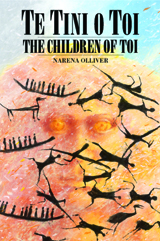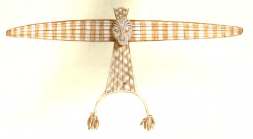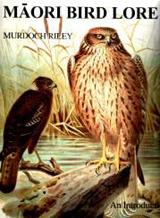New
Zealand
Birds
New Zealand Birds’
(The Greytown Gallery)
65 Wood Street
Post Office Box 146
Greytown, 5742
Wairarapa
New Zealand
Mobile: +64 (0)27 508 5078
narena@nzbirds.com
Historical fantasy
Available from Amazon
Te Tini o Toi, The Children of Toi, (book one), by Narena Olliver
The MAORI KITE, Te Manu Tukutuku or Manu Aute

“Of all the games in vogue amongst the Maori(s)”, says Archdeacon Walsh in the Transactions of the NZ Institute, 1912, “that of kite-flying was one of the most popular.”
“It may seem strange that neither in the writings of Captain Cook nor in those of any of his companions do we find any mention of the kite. The same absence of mention of the kite is noticeable in Crozet, the historian of the ill-fated Marion expedition, which took place in 1772. Crozet was a very accurate observer, and his account of the Maori and their customs is one of the most exact and graphic that we possess. But it must be remembered that his visit was confined to a very small part of the country — a hilly, forest covered, and sparsely populated region on the coast of the Bay of Islands where kite-flying would scarcely have been practised.
“According to the universal Polynesian tradition, Maui, the hero-god, was himself a kite-flyer, and wherever his adventurous descendants have settled they have brought the practice with them; while in most places they have introduced the material of which tradition states his kite was originally made — viz., the aute or paper-mulberry, which gives the New Zealand kite its generic name — the term manuaute meaning “the bird (made of) the aute.”
“This plant, a small tree, with rough trilobed leaves, known to botanists as the Broussonetia papyrifera, is common to most of the Pacific Islands, where to this day its bark is used for the manufacture of tapa, or Native cloth. Together with the kumara or sweet potato, the hua or calabash, the ti pore or Cordyline terminalis, and probably the karaka or native laurel, it was introduced into New Zealand by the Maori(s) in some of their earlier migrations. Though specimens of the tree, as well as of the cloth which was made from it, were seen by Cook and others of the early navigators, it never seems to have been very abundant. Being a tropical plant, it would no doubt need a good deal of care in cultivation; and as soon as the Maori(s) were able to obtain a supply of cotton and linen cloth it was neglected, and became the prey of wandering cattle, and gradually died out.
“It is probable that the first kites made in New Zealand were constructed on the Polynesian model, in which the aute was used in the form of tapa, or paper cloth, stretched on a frame; but the difficulty of obtaining a sufficient quantity of the bark, and perhaps the unsuitability of the climate for the manufacture of tapa, necessitated the adoption of another material, especially for the larger kites, and a substitute was found in the leaves of the raupo (a kind of giant sedge — Typha latifolia), a coarse tussock-grass named upoko tangata, or in the flower stems of the kakaho (Arundo conspicua). Even after the plant had become scarce the connection with the aute was kept up, the heads of the kites being sometimes made of that material while the body and wings were of commoner stuff.
“All the larger kites consisted of a light frame of twigs or reeds to which were sewn the raupo, upoko tangata, or whatever other material might be used to hold the wind. Even when the aute was used it was employed — at least in later times — in the form of strips of the inner bark; in any case, there is no record of its use in the form of tapa for this purpose in New Zealand.
“The maori kite was known under several names, and probably each name described some special variety, differing from others in size, shape, or material of which it was made. Thus there is the manu or bird, the kaahu or hawk, the paakau or wing, and the manuwhara or kite of the canoe sail. Still, the term manuaute seems to have been retained as a general name, and might be used loosely for any variety.
“It appears to have been customary both in New Zealand and throughout Polynesia for the kite-flyer to chant a kind of song as the kite went up. These songs were a variety of karakia called turu manu, or kite charm, and were believed to make the kite fly properly. A number of these have been preserved. They are often full of poetic fancy; but the archaic language in which they are composed, while denoting their great antiquity, makes them extremely difficult of translation.
“...probably the finest account of the kites and kite-flying is given by Te Rangi in the manuscript held in the Auckland Public Library. He commences with a description of the manuaute, which he says was a comparatively unimportant kite, but was nevertheless a very good flier, requiring from 150 to 200 yards of string of dressed flax, muka, for one of moderate size, and from 300 to 700 yards for a larger one.
“But this was apparently only a toy compared with the manukaahu and the manuwhara of which he waxes picturesque. Unfortunately he does not give dimensions, but they must have been immense machines, even allowing for exaggeration in the statement it took “from five to ten men, to twenty to thirty men” to send them up, and, including the men holding the line it took no less than seventy men to manipulate a kite.
“But the Maori kite was not always a mere plaything. It often had a religious significance. Maui compelled the winds with his kite, and in the hands of a powerful tohunga the manuaute could do wonderful things. As an instrument of divination it could tell whether it would be wise for a war-party to attack a fortfied position, as a means of seeking land for settlement and for communication between tribes.”
Poetry: —
Turu Manu
Taku manu, Ke turua atu nei,
He Karipiripi, ke kaeaea;
Turu taku manu,
hoka taku manu,
Ki tua te haha-wai;
Koia Atutahi, koia Rehua,
Whakahoro tau tara,
Ki te Kapua, Koia E!
Fly away from me, my bird, glance restlessly as you dart about on high; swoon down like the bush hawk in search of its prey. Fly ever higher, beautiful bird, soar beyond the clouds and over the trough of the sea, onward to Caropus, onward to Antares, speed to the clouds like a warrior about to do battle, onward!
Illustration description: —
Reference(s): —
Transactions of the NZ Institute, Volume XLV, 1912, 375-384.
Best, Elsden, The Maori as He Was, Dominion Museum, 1934.
Page date & version: —
Tuesday, 16 July 2019; ver2009v1

Kite at the Auckland Museum


